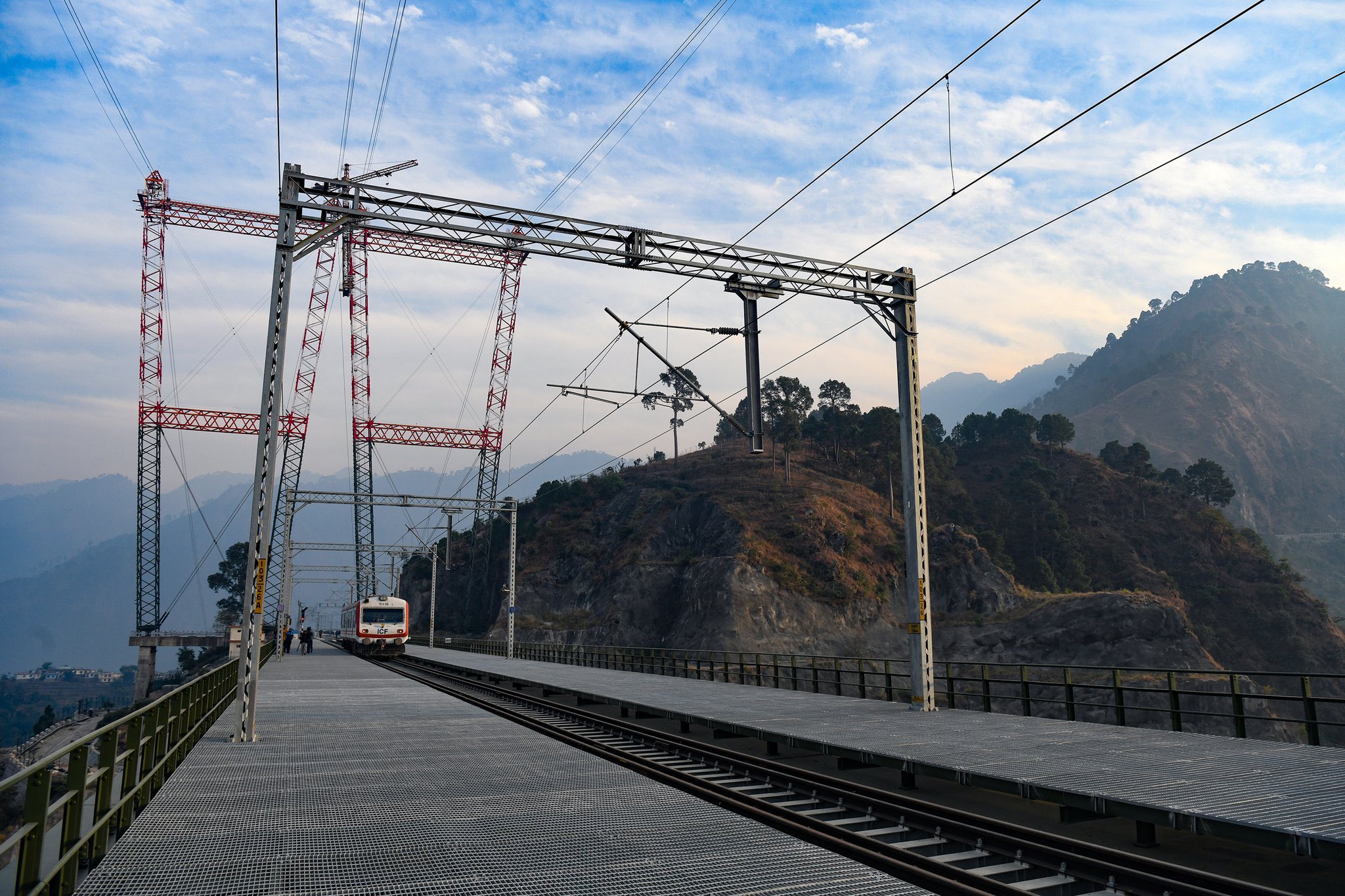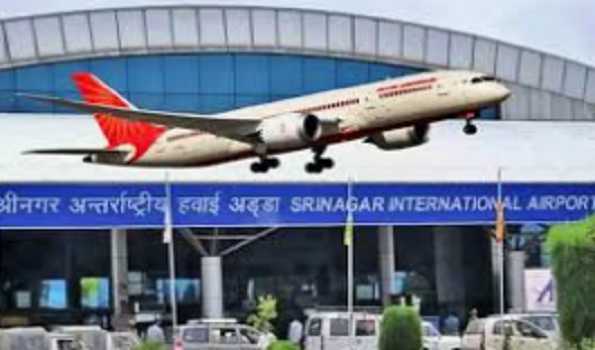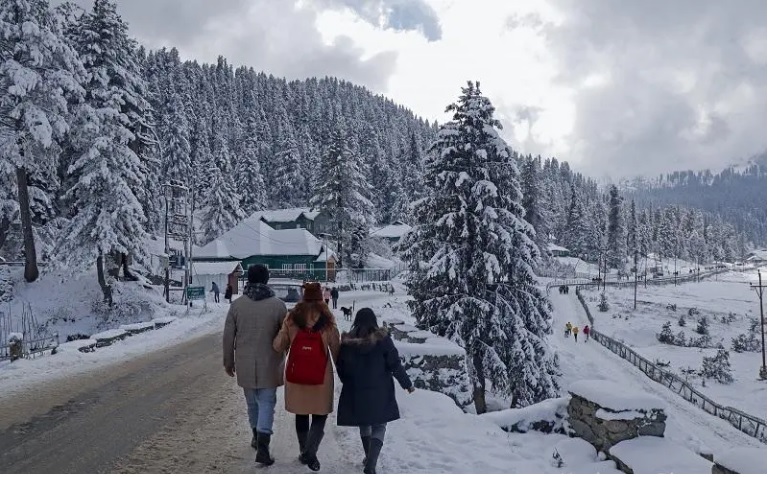Kashmir Direct Rail Connectivity 2025 | USBRL Project, Vande Bharat Express, Economic Impact
By: Javid Amin | 29 October 2025
In 2025, the union territory of Jammu & Kashmir (J&K) is on the cusp of a historic milestone: the completion of the USBRL rail link and the launch of high-speed connectivity mean that the Kashmir Valley will soon be connected to the rest of India by rail in a reliable, all-weather mode. The significance is profound — for mobility, economy, tourism and social integration.
This article unpacks the project’s background, engineering significance, the launch of the Vande Bharat service, what is still ahead, and why this matters for J&K’s future.
The USBRL Project: A Himalayan Engineering Feat
01. Project Background & Scope
The Udhampur-Srinagar-Baramulla Rail Link (USBRL) project is one of the most ambitious railway undertakings in India. Sanctioned decades ago, it spans roughly 272 km through extremely challenging topography — mountains, tunnels, bridges, steep gradients and weather-extreme zones.
According to official sources, the project has been constructed with numerous tunnels and bridges — the numbers read like engineering records: approximately 36 major tunnels over 119 km and 943 bridges.
For a region long accessible only by road or isolated rail sections, the completion of this rail link heralds a new connectivity era.
02. Engineering Highlights
Some of the standout features of the USBRL axis:
-
Chenab Bridge: The world’s highest railway arch bridge, located near Reasi (J&K), part of the USBRL alignment.
-
Anji Khad Bridge: India’s first cable-stayed railway bridge.
-
Extensive tunnelling: For example, the Banihal–Qazigund tunnel (T-50) is among India’s longest railway tunnels.
-
The route passes through some of the most geologically and climatically difficult terrain in the country — snow-zones, landslide-prone slopes, seismic zones, freezing winters.
03. Milestones & Timeline
Some key dates and steps:
-
The stretch was first approved decades ago; the project officially gained momentum in the late 1990s.
-
On 6 June 2025, Prime Minister Narendra Modi inaugurated the final section of the USBRL, thereby declaring the link functionally complete.
-
Commercial passenger services between critical hubs via the route have commenced (see next section).
04. What It Means: All-Weather Rail Access
Until now, the Kashmir Valley’s rail links were either isolated or heavily dependent on single stretches vulnerable to weather or security disruptions. With USBRL in place, the region now has a year-round railway backbone — capable of functioning even when roads get blocked by snow, landslides or security exigencies.
For a mountainous region like J&K this is transformative: ensuring connectivity for goods, people, services and strategic movement.
The Katra–Srinagar Vande Bharat: A New Era in Travel
01. Inauguration & Operational Details
The link became operational quickly. The first commercial trains of the Katra–Srinagar stretch (via Banihal) commenced operations from 7 June 2025, after the inaugural run on 6 June.
Key stats:
-
Train numbers: 26401/26402 (and 26403/26404) for the two pairs daily.
-
Journey time: Approx 3 hours between Katra and Srinagar, significantly faster than previous modes.
-
Ticket classes: Chair Car (CC) and Executive (EC); fares beginning around ₹ 715 for CC.
-
Frequency: Six days a week, except certain days (e.g., no service on Tuesday for one train set, Wednesday for the other).
-
Ticket bookings sold out rapidly after launch—public enthusiasm has been high.
02. Route, Stops & Infrastructure
The train runs between Shri Mata Vaishno Devi Katra (Katra) and Srinagar via Banihal and other stations. Key stop includes Banihal and Sangaldan.
The route leverages the newly completed USBRL alignment, traversing the Chenab Bridge, Anji Khad Bridge and the tunnels and bridges that make the line possible.
03. Special Design for Himalayan Conditions
The train set is specially adapted for Kashmir’s conditions: advanced heating systems, defrosting systems for windshields, large windows to capture scenic views while insulating from cold, and infrastructure to endure snow and sub-zero temperatures.
04. Why the Railway Official’s Statement Matters
When a senior official from Northern Railways confirms that operational and security challenges are being addressed before full direct connectivity launches, it signals that the project is nearing seamless integration of rail connectivity between Kashmir and major metros without transshipment. This flips the paradigm: instead of arriving by road or via Jammu and then transferring, travellers and goods can move directly via train.
Why This Connectivity Matters
01. Tourism Implications
The Kashmir Valley has long relied on tourism as a major economic engine. Direct high-speed rail connectivity means:
-
Faster, more comfortable travel for tourists and pilgrims (to places like Gulmarg, Pahalgam, Vaishno Devi) → increased footfall.
-
Reduced dependence on road journeys which are subject to closures, weather and security risk.
-
Opportunity to market Kashmir as a rail-accessible destination year-round; rewritten story from “road only” to “rail link available”.
-
With seats selling out, public anticipation is high—this momentum can be leveraged for tourism revival.
02. Economic & Goods Movement
Beyond passengers, the rail connectivity brings major gains for goods logistics:
-
Horticulture (especially apples) and perishables will find faster, more reliable routes to markets; less spoilage and reduced cost.
-
Handicrafts, local produce, industrial supplies will benefit from improved transport economies.
-
Freight trains (once fully operational) can reduce transport cost, transit time, increase supply-chain reliability.
-
Regions previously left “difficult to reach” become part of wider rail-networked economy.
03. Social & Strategic Benefits
-
For students, patients, professionals in Kashmir, mobility improves: easier travel to other parts of India.
-
For the armed forces and security logistics, an all-weather rail link strengthens strategic posture in a sensitive region.
-
Regional integration: the Valley becomes less isolated; bridges (literal & metaphorical) are built linking communities, commerce and culture.
04. Infrastructure Resilience & Future Proofing
-
Road links in J&K have frequently been disrupted by landslides, snow, security incidents; rail provides alternative.
-
Engineering marvels like Chenab Bridge and Anji Khad Bridge reflect long-term investment in resilient infrastructure.
-
Once trains and goods can bypass risk-prone roads, the region gains economic stability and resilience to shocks.
What Still Needs to Be Done: The “What’s Next” List
While the project has delivered a major milestone, there remain steps ahead to fully realise the connectivity promise.
01. Operational & Security Challenges
According to railway officials, work continues to resolve operational and security aspects (e.g., full clearance, systems stabilisation, freight readiness) before the link becomes fully seamless with the rest of India (i.e., direct trains from Delhi and other metros into the Valley).
-
Ensuring safety systems (snow/landslide detection, tunnel monitoring, bridge monitoring) are fully functional.
-
Freight operations: rolling out freight corridors, yard infrastructure, cold-chain linkages.
-
Integrating booking/reservation systems, ensuring connectivity with major cities beyond Katra/Srinagar.
02. Extension To & From Major Cities
While Katra–Srinagar has the Vande Bharat link, extension of services to major hubs like Delhi or Mumbai is expected. That may require additional scheduling, resource allocation and infrastructure enhancements.
03. Cold-Chain & Goods Logistics Readiness
To fully leverage the rail link for horticulture, perishable goods movement, the region must build up:
-
Cold-storage hubs near rail stations.
-
Sorting/packing centres aligned with rail schedules.
-
Freight-train compatibility (gauge, load, speed) and integration with road for last-mile delivery.
04. Tourism Product & Destination Readiness
Better connectivity must be matched by:
-
Upgrading hotels, guesthouses, home-stays in less-connected zones.
-
Supporting transport (local shuttles from station to tourist hotspots).
-
Digital marketing campaigns to advertise new rail access.
-
Ensuring visitor services (health, safety, information) are aligned for the increased flow.
05. Community & Environmental Preparedness
-
Local communities along the rail route will need to adjust to changes—in mobility, influx of tourists, goods. Engaging them early is critical.
-
Environmental safeguards: mountain rail links traverse delicate ecosystems. Maintenance, monitoring and sustainable practices must be built-in.
Ground Realities: Voices & Visuals from the Region
On 11 June 2025, media reported that the USBRL route had become fully operational after 28 years of work. Though the Katra–Srinagar Vande Bharat service began, travellers have already noted the dramatic reduction in travel time and improved comfort.
Several travellers described the experience as historic: one passenger told NDTV on taking the first run, “It’s as if Kashmir has come within striking distance of the rest of India.”
On the operator side, Northern Railway officials noted that bookings were full for at least the first 10 days after launch.
Despite the momentum, there remain logistical bottlenecks and seasonal concerns (landslide risk, winter closures) that users and planners alike recognise.
Strategic Implications for Jammu & Kashmir
01. Shift in Economic Geography
The rail link effectively rewires the economic geography of J&K:
-
Areas previously remote or dependant solely on road may now become rail-hubs.
-
Businesses (horticulture, logistics, tourism) can rethink location-advantages: proximity to rail station becomes an asset.
-
Investors may regain confidence, seeing the risk of access-fragility reduced.
02. Tourism Re-imagined
With faster rail connectivity, J&K can reposition itself:
-
Beyond summer tourism, year-round offerings (winter sports, pilgrimage, nature/eco-tourism) become more viable.
-
Travel time reduction enhances accessibility for domestic tourists, who may choose rail for cost-factor and comfort.
-
Linkages between rail stations and tourist destinations will become critical (shuttle services, last-mile connectivity).
03. Social & Human Mobility Gains
-
For students and professionals, the Valley’s connectivity opens up further educational and employment possibilities in other parts of India.
-
For medical travel, people may travel by train rather than relying solely on flights/road, reducing costs and increasing options.
-
For local mobility, more frequent and comfortable travel between Jammu region, Katra, Srinagar means inter-region ties strengthen.
04. Strategic & Security Dimensions
In a region with strategic sensitivity, an all-weather rail link strengthens supply-chain resilience and mobility for essential services (including defence). The project signals improved integration of remote border regions with national infrastructure.
Risks & Challenges Ahead
While the outlook is positive, several risk-factors merit attention:
-
Maintenance & weather risk: Mountain rail corridors are vulnerable to landslides, avalanches, snow closures and rock falls. Ongoing investment in monitoring and maintenance is essential.
-
Operational resilience: The initial service load is high (bookings sold out quickly) but sustaining it—and extending to freight—will require the rail system to be rock-solid.
-
Infrastructure mismatch: If demand outpaces supporting infrastructure (last-mile transport, station access, hotel dovetailing) travellers may face friction, reducing gains.
-
Economic uplift expectations: Connectivity improves, but jobs, value-addition, local business may not automatically boom unless matched by policy and investment push.
-
Environmental & social impact: Large infrastructure doesn’t guarantee equitable benefit. Communities along the route must be included; ecosystems must be protected.
What This Means for the Economy of J&K
Direct rail connectivity is more than a transport milestone; it can be a catalyst for economic transformation in J&K:
-
Boost to tourism receipts: Reduced travel times, improved comfort and visibility could drive increased tourist arrivals and longer stays.
-
Horticulture/goods movement: With road bottlenecks less dominant, goods (especially perishables) can reach markets faster, reduce spoilage and cost.
-
Small business & informal economy: Vendors, guesthouses, transporters now have new potential customers (rail-travellers). Houseboats, local tourism services may benefit.
-
Investment attraction: Infrastructure de-risking (rail access) makes the region more investment-friendly—whether for hotels, cold-chain, logistics parks, agro-processing.
-
Inter-region mobility and labour market integration: Youth mobility, job access, educational travel become easier; regional-economy becomes less isolated.
However, to unlock these potential gains, policy-makers and business stakeholders must act proactively — rolling out supporting infrastructure, aligning tourism products, incentivising agro-value chains, and integrating rail stations with local economies.
Bottom-Line: A New Chapter Begins, But the Story Continues
The completion of the USBRL project and the launch of the Katra-Srinagar Vande Bharat Express mark a transformative moment in Jammu & Kashmir’s connectivity story. For decades, the Valley has been physically beautiful yet infrastructurally isolated; now, the rails bind it more firmly into the national grid.
But the arrival of trains is just the beginning. What lies ahead is the task of converting connectivity into sustained economic and social progress. The sections ahead — horticulture, tourism, informal economy, logistics — all now stand to benefit, but the benefit will not accrue automatically. It will require coordinated policy, investment, local inclusion and vigilant maintenance.
In effect, J&K now has the rail-access infrastructure; the next wave is to build the rail-access economy — the jobs, the value-chains, the mobility, the opportunities. If done well, this project may one day be seen not merely as a rail-link, but as a bridge to transformation for Jammu & Kashmir.


